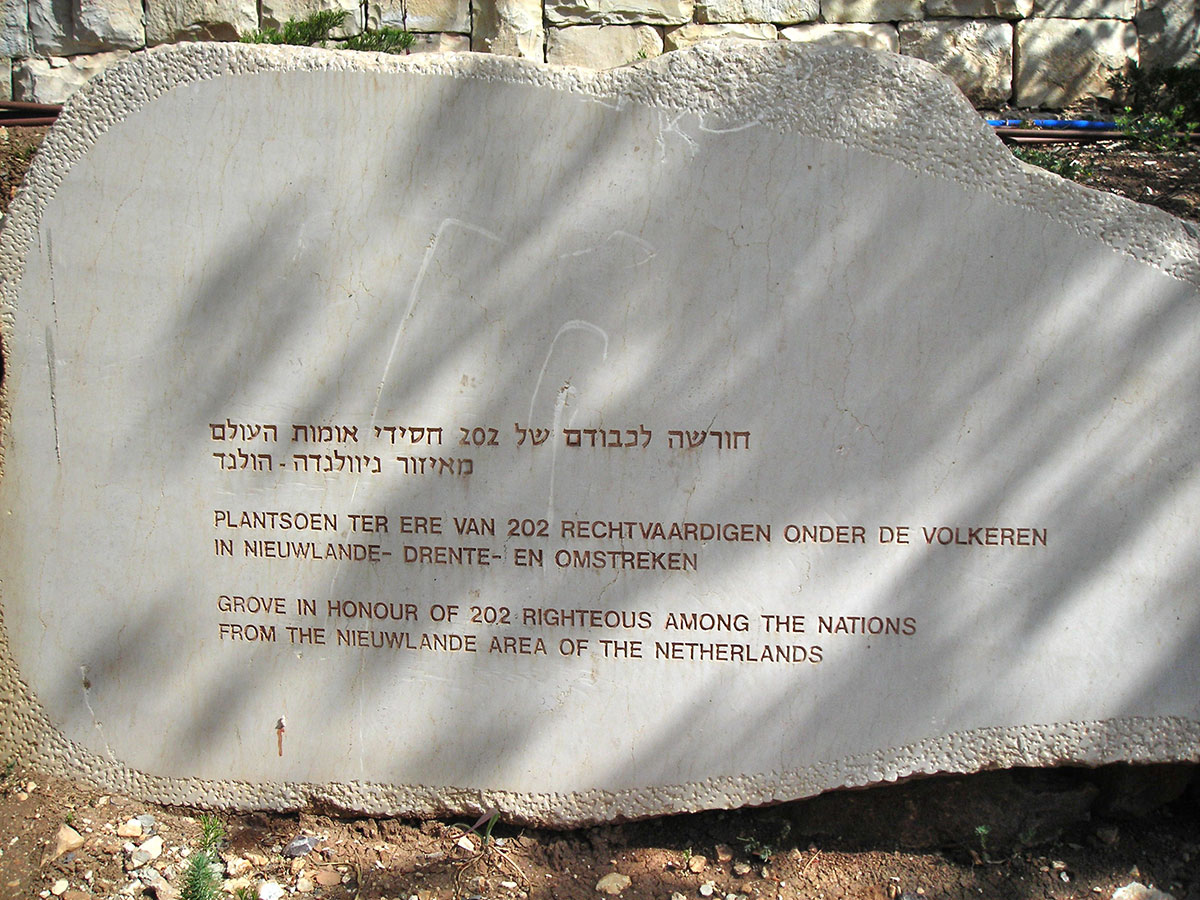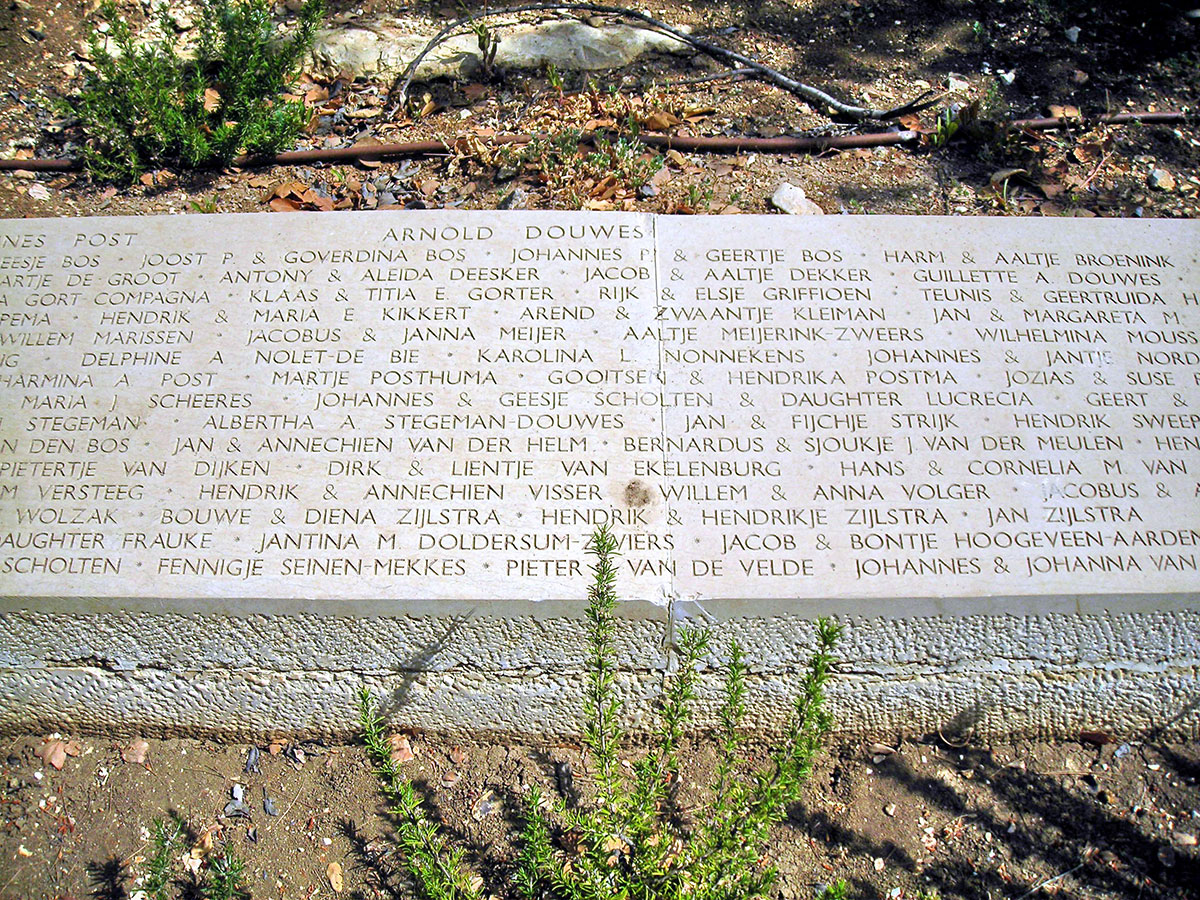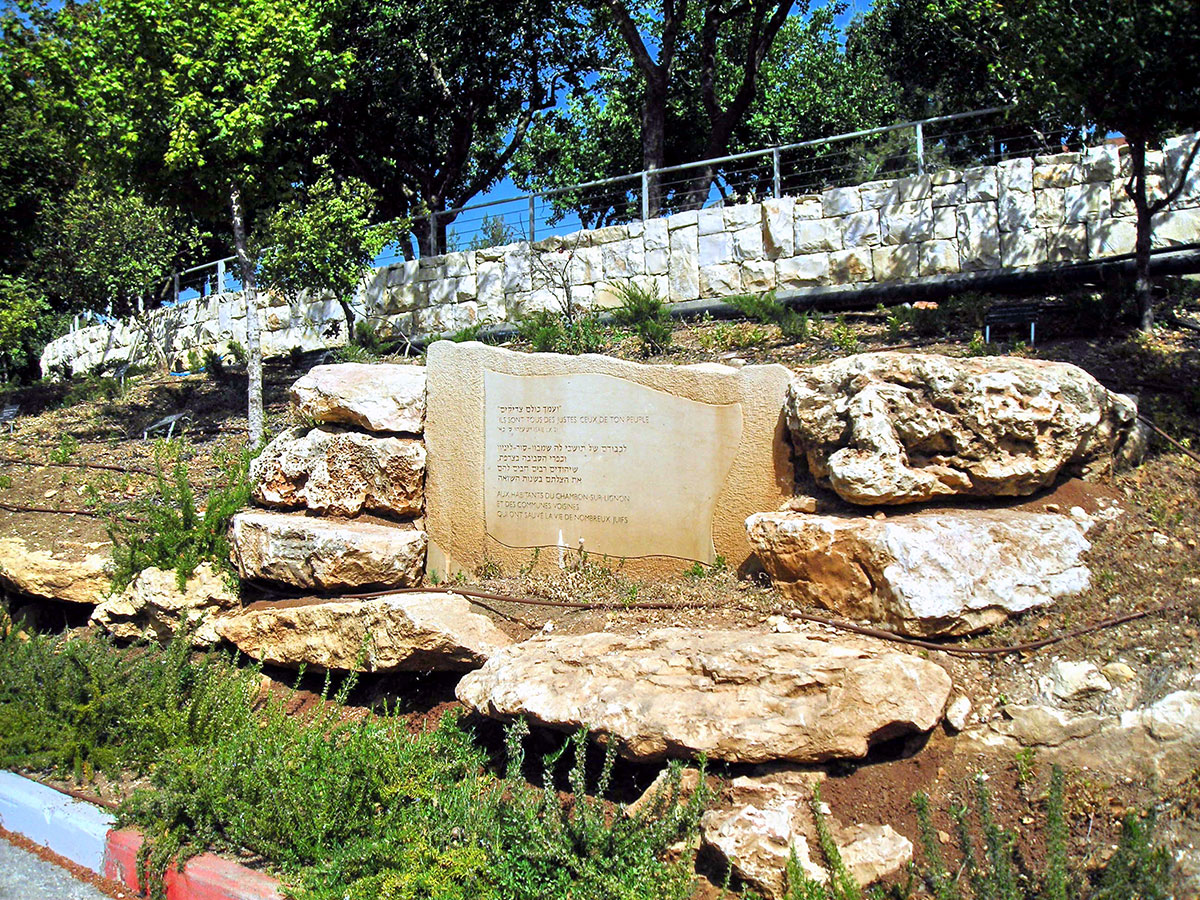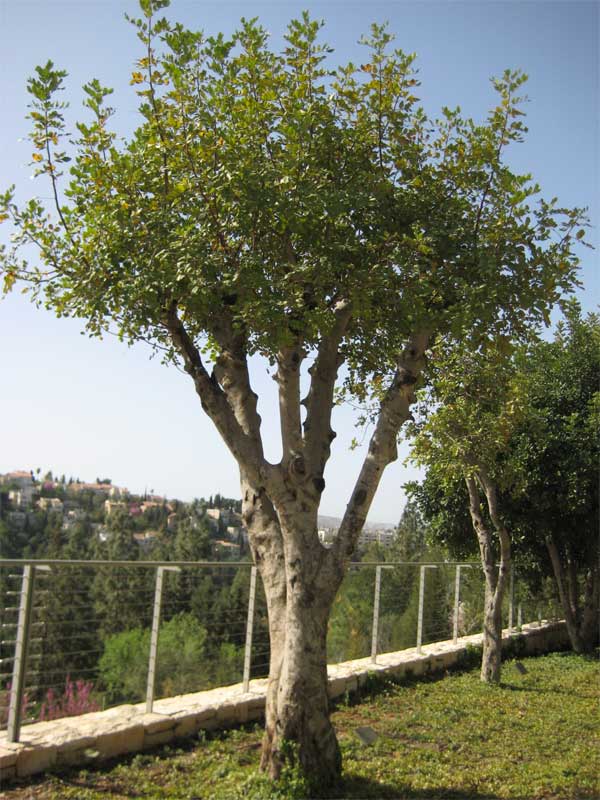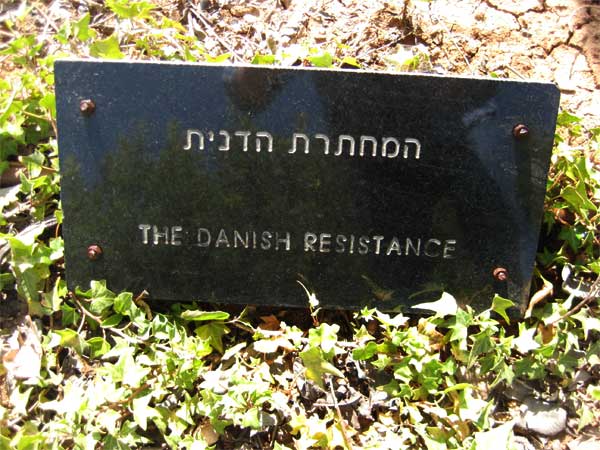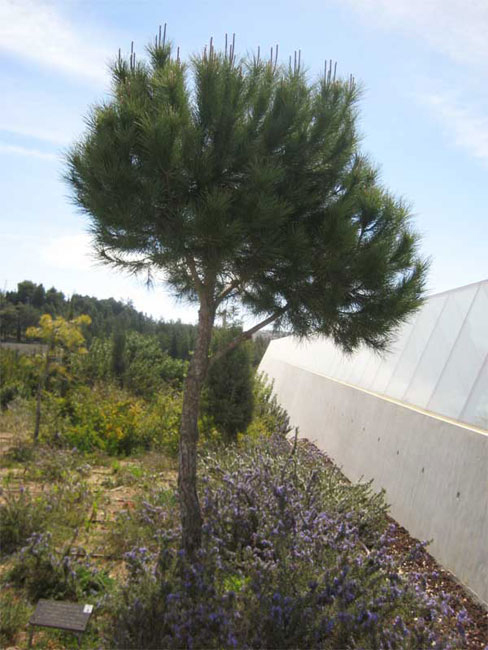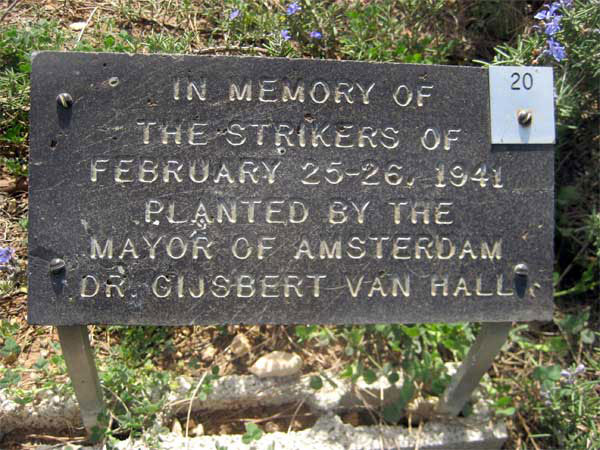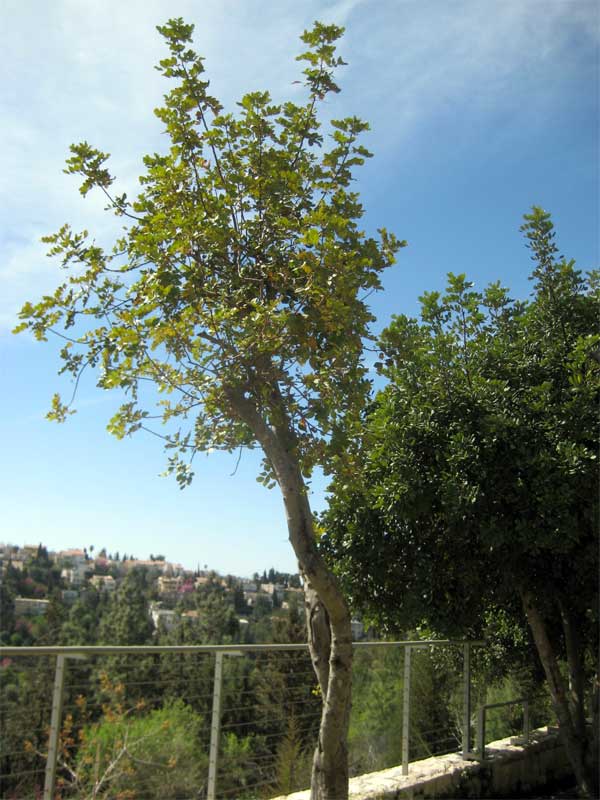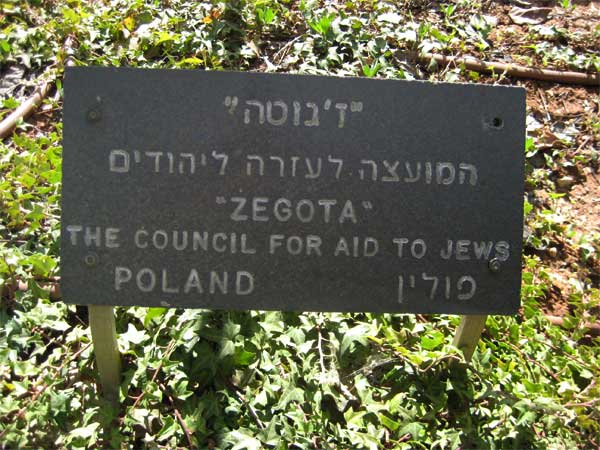The Memorial Honoring the Village of Nieuwlande
A unique instance of collective rescue took place in the Dutch village of Nieuwlande. In 1942 and 1943 the village inhabitants resolved that every household would hide one Jewish family or at least one Jew. Given the collective nature of the activity, the danger to the village was small – there was no fear of denunciation since all the village dwellers were partners to the "crime". All 117 inhabitants of that village were recognized as "Righteous Among the Nations".
Among the leaders of this rescue effort were Johannes Post and Arnold Douwes. Douwes, the son of a pastor, was recruited to the underground by Johannes Post, a farmer and town counselor in the village. Post had never had very much to do with Jews or Judaism, but when antisemitic measures were introduced, he threw himself body and soul into the effort to help Jews on the run. Eventually Douwes took over. Jews ordered to report to Westerbork were sent to him by the underground. He in turn, scoured the countryside to find families to shelter them. In addition, Douwes provided the fugitives with food, new identification papers, and financial support.
The tree honoring Arnold Douwes is situated in at the beginning of the Avenue of the Righteous, just in front of the entrance to the Museum of Holocaust History. On 18 June 1988 a monument to honor the village of Nieuwlande was dedicated in Yad Vashem, and is located on the way to the Valley of the Communities and the Garden of the Righteous.
The Monument for Le Chambon-sur-Lignon
Le Chambon-sur-Lignon is a Protestant village in Haute-Loire in southern France. During World War II, it became a haven for Jews fleeing from the Nazis and their French collaborators.
The Chambonais hid Jews in their homes, provided them with forged I.D. and ration cards, and helped them over the border to safety in Switzerland. With their history of persecution as a religious minority in Catholic France, empathy for Jews as the people of the Old Testament, and the powerful leadership and example of their pastor André Trocmé and his wife, Magda, the people of Le Chambon acted on their conviction that it was their duty to help their "neighbors" in need.
The Chambonais rejected any labeling of their behavior as heroic. They said: "Things had to be done and we happened to be there to do them. It was the most natural thing in the world to help these people." After the round- up and deportation of Jews in Paris in July 1942, Pastor Trocme had delivered a sermon to his parishioners: "The Christian Church should drop to its knees and beg pardon of God for its present incapacity and cowardice."
The American Friends (Quakers) and other Protestant organizations provided assistance to Le Chambon to set up homes for children whose parents had been deported. The head of one of these homes was Daniel Trocmé, the young cousin of Pastor Trocmé. In June 1943 he and "his" children were arrested and deported to the East. Daniel Trocmé died in Majdanek.
The Trocmes were recognized by Yad Vashem as Righteous among the Nations; a tree was planted in honor of André and Magda Trocmé – situtated at the beginning of the Avenue of the Righteous, just in front of the entrance to the Holocaust History Museum; another tree was planted in honor of Daniel Trocmé. About 40 people from the village of Le Chambon-sur-Lignon were awarded the title of Righteous. A small garden and plaque on the way leading to the Valley of the Communities and the Garden of the Righteous were dedicated to the people of Le Chambon-sur-Lignon.
The Tree in Honor of the Danish Underground
The rescue of the Danish Jews in October 1943 is a unique story. In the first years of German occupation no anti-Jewish legislation was enacted and the situation of the Danish Jews did not change much. Nazi Germany wanted to encourage the cooperation of Denmark and knew that singling out the Danish Jews and persecuting them would result in wide opposition. However in the fall of 1943, following a sharp increase in strikes and sabotage against the occupation, the German policy changed and preparations were made to rid the country of its 7,800 Jews. News of the planned roundup was passed and the Jews were warned, moved to hiding places and to fishing ports, from where they were transported to Sweden. Researchers have shown that in an attempt to get rid of the Jews without causing too much opposition, the German Plenipotentiary to Denmark chose a compromise and therefore, even though the authorities were aware of the escape to Sweden, did not try to prevent it. In fact, German ships were told to return to harbor so as to facilitate the transfer. This however was not known to the Danes who chose to help the Jews and who acted under the belief that great danger was involved. The Danish underground joined the endeavor, and thanks to the proximity of Sweden 7,200 Jews and some 700 of their non-Jewish relatives were transported to safety in the course of three weeks in October 1943. In some cases Jews were caught by the local authorities; some did not want to leave; others had no means or connections enabling them to embark on the journey. A total of 482 Jews, mostly elderly and sick, were caught and deported to the camp of Theresienstadt.
The rescue operation by the Danish underground is exceptional because of the widespread agreement and resolve of many Danes from all walks of life – intellectuals, priests, policemen, doctors, blue-color workers – to save the Jews. While some Danes were pro-Nazi and even joined the Waffen SS and participated in war crimes, the underground members implemented the unique rescue. They viewed it as a national refutation of Nazi Germany and a reaffirmation of democratic and humanistic values. It should be noted that since the 1990’s historians have uncovered new perspectives of this operation. Danish scholars have shown that in many cases big sums of money were paid to the seamen who brought the Jews across to Sweden.
To pay tribute to this exceptional rescue operation and in the understanding that this was a joint effort, a tree was planted in the Avenue of the Righteous in honor of the Danish underground. The Underground did not receive the Righteous Among the Nations title, which is only awarded to individuals, not to groups, This was also in the spirit of the request expressed by the members of the Danish underground not to honor them as individuals. Nevertheless, several Danes, whose acts of rescue were exceptional, were awarded the title of Righteous Among the Nations title.
The Tree in Honor of the Amsterdam Strike
In the beginning of 1941 the Dutch pro-nazi movement instigated a series of provocations in Jewish neighborhoods in Amsterdam, leading to a series of clashes. The subsequent arrest and brutal deportation of several hundred Jews to Buchenwald and Mauthausen in February 1941 horrified the inhabitants of Amsterdam. On 25 February 1941, Communist Party activists declared a strike and, in their manifesto, demanded an enhancement of social benefits and the release of Jewish prisoners. The strike spread rapidly as all segments of the population, irrespective of their adherence to the Communist platform, shut down all means of transport, large enterprises, and public services. By the next day, the strike spread to towns around Amsterdam. The Germans, although surprised by the extent of the strike, countered it with massive forces and stamped it out by its third day. The brutal suppression of the strike crippled Dutch resistance organizations. Following the strike, the Germans toughened their anti- Jewish policies.
The “February strike” was a unique widespread public protest on behalf of the Jews during the Nazi era. A tree was planted on the Mount of Remembrance during the visit of the mayor of Amsterdam in honor of the Amsterdam strike.
The Tree in Honor of Zegota
Zegota, the Council to Aid the Jews, operated from December 1942 until the liberation of Poland. It originated as the Provisional Committee for Aid to Jews, initiated by writer Zofia Kossak-Szczucka, and consisted of democratic Catholic activists. In September 1942 Kossak-Szczucka, horrified by the deportation of the Warsaw Jews, published a leaflet protesting against the murder of the Jews. In December 1942 the provisional committee became a permanent council – Zegota. By the time of its establishment, most of Poland's Jews had been killed, but the organization's activists, at enormous personal risk, managed to help and save several thousand Jews, especially children.
Zegota was run jointly by Jews and non-Jews. Though coming from a wide range of political movements, the organization’s members were united by the common cause of fighting the crimes perpetrated by Nazi Germany. Zegota fabricated false papers, arranged hiding places and provided food and medicines to Jews in hiding. Thousands of Jewish children were placed in homes, convents and orphanages.
The organization was funded by the Polish government in Exile and Jewish organizations, but suffered from chronic shortage of funds.
A tree was planted in the Avenue of the Righteous, honoring this unique organization, that despite the arrests of some of its members, was able to operate for a considerable length of time and to help Jews in many different ways. Several members of Zegota (Irena Sendler, Wladyslaw Bartoszewski, Zofia Kossak-Szczucka and others) were recognized as Righteous Among the Nations.




